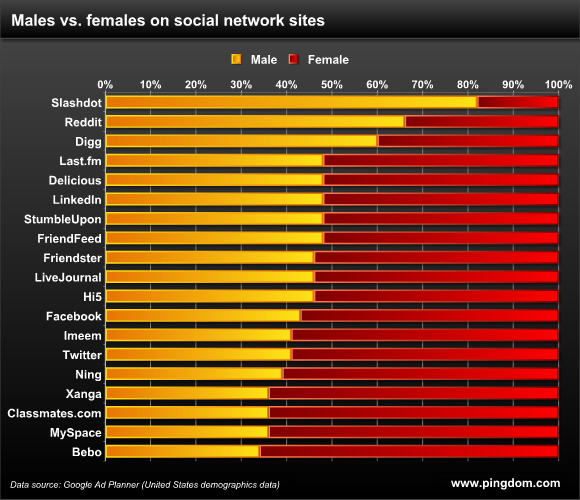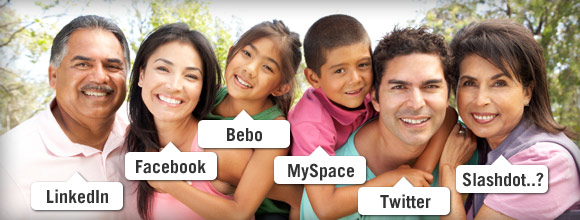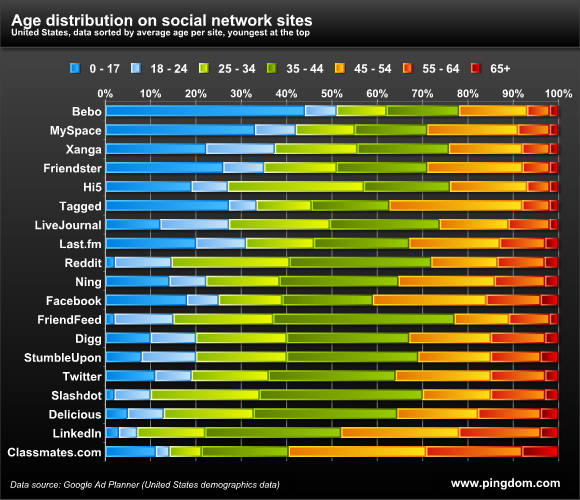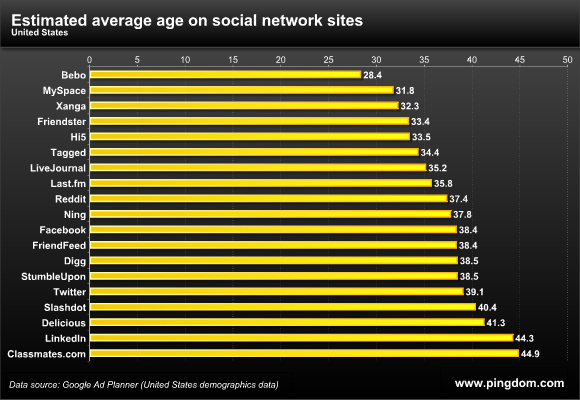Love is a Battlefield Spanning-Tree Network with no 4-Cycles
Quick, in high school were you ever told not to date your old girlfriend’s current boyfriend’s old girlfriend? Or your old boyfriend’s current girlfriend’s old boyfriend? Probably not. But I bet you never did, either. This month’s American Journal of Sociology has a very nice paper (subscription only, alas) by Peter Bearman, Jim Moody and Katherine Stovel about the structure of the romantic and sexual network in a population of over 800 adolescents at “Jefferson High” in a midsized town in the midwestern United States. They got a pretty well-bounded population (a high school included in the AddHealth study) and mapped out all the connections between the students. Read on for the lurid details.
The authors found that the observed network isn’t well-represented by existing models, which are mainly concerned with predicting how STDs propagate through populations and have often been based on ego-centered network data. These are surveys where you ask the respondents about their sexual networks, but the respondents aren’t necessarily in the same network. Here’s a picture of four kinds of network:


Core models posit a small group of very sexually-active individuals who occasionally come into contact with (and infect) those outside the core. Bridge models think in terms of an infected component and an uninfected component which join at some point. The biggest network component observed at Jefferson High turned out to be the fourth type, however: a “spanning tree” structure. This is “a long chain of interconnections that stretches across a population, like rural phone wires running from a long trunk line to individual houses … characterized by a graph with few cycles, low redundancy, and consequently very sparse overall density.” When they tried to simulate this bit of the graph structure, the authors found they could get most of the way there using a simple model where the probability of a tie depended on individuals having a preference for others with the same amount of sexual experience as themselves.[1] But simulated networks based on this model didn’t quite match the properties of the observed network. In particular, while the simulations had cycles of length 4, the Jefferson High network did not.
What’s a cycle? If you start at Crooked Timber and click over to Dan Drezner and then click Dan’s link to Mark Kleiman and then return to Crooked Timber via Mark’s link to us, you’ve completed a cycle of length 3: a walk through the network that starts and ends with the same actor and where all the other actors are different and not repeated along the way. Cycles of length 3 are the smallest possible cycles. When it comes to tracing paths through heterosexual relationships, though, the smallest possible cycles are of length 4. In order to make a cycle beginning and ending with yourself, you need two members of the opposite sex plus one intervening individual the same sex as you. It turns out that this kind of cycle is just not found in the Jefferson High network. Although there’s no explicit taboo or social norm against that kind of pattern, nevertheless people just don’t date their old partner’s current partner’s old partner.
From the perspective of males or females (and independent of the pattern of “rejection”), a relationship that completes a cycle of length 4 can be thought of as a “seconds partnership,” and therefore involves a public loss of status. Most adolescents would probably stare blankly at the researcher who asked boys: Is there a prohibition in your school against being in a relationship with your old girlfriend’s current boyfriend’s old girlfriend? It is a mouthful, but it makes intuitive sense. … For adolescents, the consequence of this prohibition is of little interest: what concerns them is avoiding status loss. But from the perspective of those interested in understanding the determinants of disease diffusion, the significance of a norm against relationships that complete short cycles is profound. The structural impact of the norm is that it induces a spanning tree, as versus a structure characterized by many densely connected pockets of activity (i.e., a core structure).
Individuals constitute social structures, yet those structures have properties that the members do not know about and can’t easily grasp—our vast amount of folk knowledge about our social relations notwithstanding. These properties can have all kinds of serious consequences. The “No 4-cycles” rule is interesting because on the one hand it reflects a very simple bit of structure and it’s not something that’s prohibited in any strong normative sense. I’m not sure I buy the authors’ status-based explanation for it, though. They suggest some alternatives—“’jealousy’ or the avoidance of too much ‘closeness,’ a sentiment perhaps best described unscientifically as the ‘yuck factor.’” I find the yuck-factor idea more intriquing: I wonder whether it’s more likely to show up at the limits of easily-described network structures. Bigger cycles defy easy verbal description altogether and are also subject to lack of information because some of the ties will be in the past or far away, so they’re not subject to avoidance. Dyadic ties are easy to keep track of. Short cycles are still tricky to grasp, but it’s not that hard, so being able to trace them triggers the taboo-like “yuck” response.
As for consequences, the spanning-tree structures created by experience homophily plus the 4-cycle rule are very effective at propagating diseases along their chains. But they are also easy to break in a way that core-type networks are not:
Under core and inverse core structures, it matters enormously which actors are reached, while under a spanning tree structure the key is not so much which actors are reached, just that some are. This is because given the dynamic tendency for unconnected dyads and triads to attach to the main component, the structure is equally sensitive to a break (failure to transmit disease) at any site in the graph. In this way, relatively low levels of behavior changeeven by low-risk actors, who are perhaps the easiest to influence can easily break a spanning tree network into small disconnected components, thereby fragmenting the epidemic and radically limiting its scope.
fn1. Homophily, or the tendency do associate with others with similar traits to oneself, is a powerful social force that explains a great deal about the structure of social networks—in this case, homophily on experience.
Crooked Timber




























